Erik Thörnqvist – Modern Mind
ERIK THÖRNQVIST
– MODERN MIND
ART
Erik Thörnqvist is an artist with an eye for the eccentricities hiding in the objects we surround ourselves with. In his work, familiar designs become surreal and often humorous, prompting viewers to reconsider normative assumptions about beauty, utility and value. At the start of our conversation, Thörnqvist asks me to get out a pen and paper and gives me 30 seconds to draw a chair. It comes out pretty simple, reminiscent of the furniture of the American Shakers. He is gathering intel, he tells me. He is interested in our collective design imaginary – evidently most people come up with a similar design to mine, although few people actually live with this type of chair. “It is interesting to me that this idea of the chair is so pervasive, and I wonder what else it can tell us,” he says. Here, we speak about the emotional side of modernist furniture, and how to make art about where you’re from.
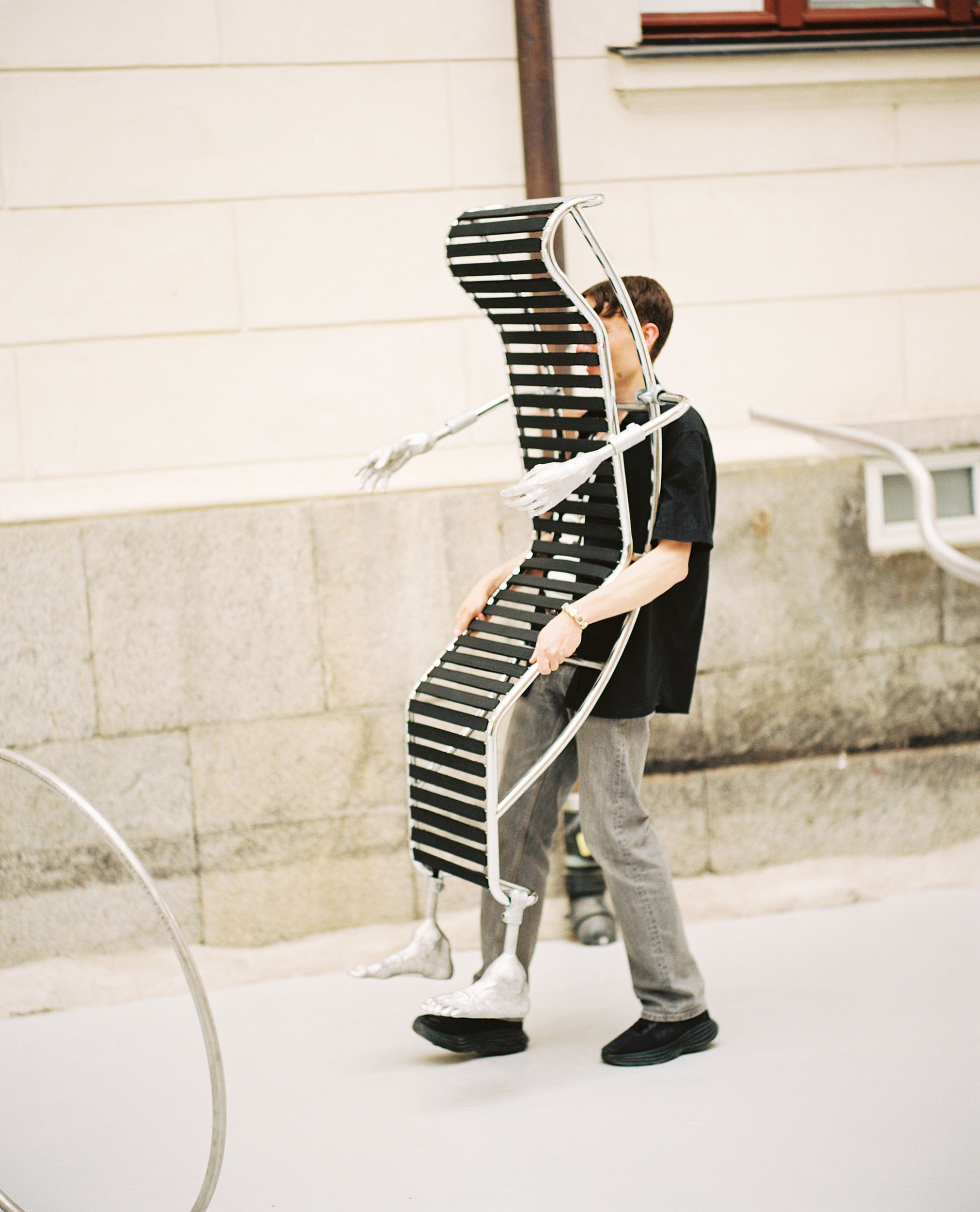
WORDS
PHOTOGRAPHY
Kristian Vistrup Madsen
Isak Berglund Mattsson-Mårn
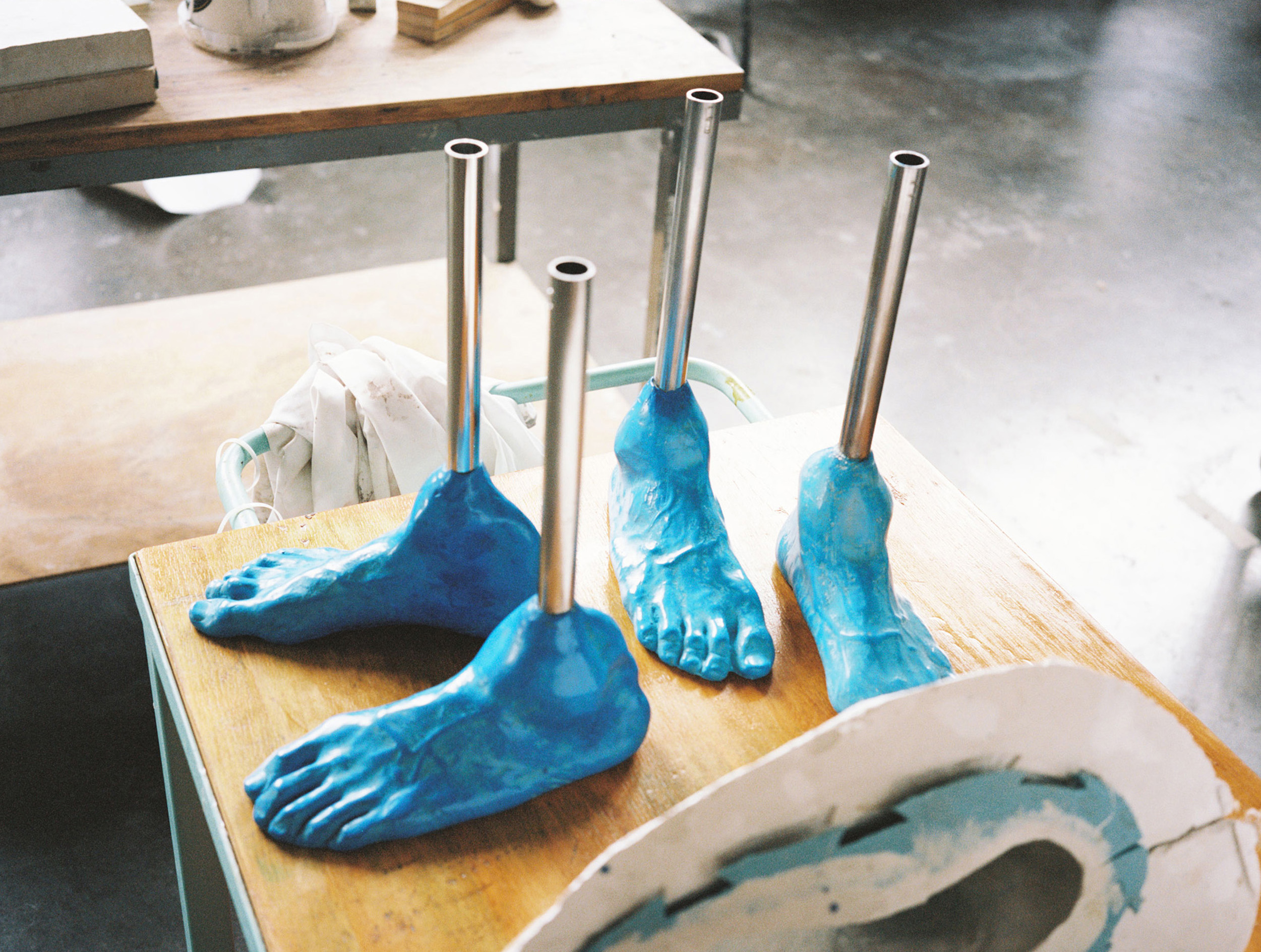

Kristian Vistrup Madsen: You’re trained as a fine artist, but the objects you make tend to relate to a history of design. Where do you see yourself on the spectrum of art to design?
Erik Thörnqvist: I see myself as a visual artist working in the field of visual art. But I am fascinated with the histories of design and architecture and love using them as starting points. Design objects often have clearer social and ideological implications. I find it interesting to go to these archetypes of chairs, tables or cups and see how they’ve developed, and what they carry with them. For instance, modernist design as it came out of the Bauhaus school in the 1920s was inspired by industry, aviation and war machines. They offered a view of a new society, untainted by the past, that didn’t bring with it all these ideas of the bourgeois family and its traditions. Mies van der Rohe’s cantilever chair was meant as this utopian object that would democratise access to design. But of course now these objects have become luxury anyway, and speak precisely to history and family and exclusivity. I find that a lot of design at the moment draws on modernist ideas in a selective way where politics and ideology are lost. In Sweden, the ideas of International Style architects like Le Corbusier were so important to the People’s Home movement – in Swedish, Folkhemmet – and are still very present in the houses and schools we use today. The Raumplan developed by Adolf Loos, for instance, continues to impact my body every day in so many of the spaces I move through. I find that fascinating.
KVM: In a way, we can think of your art works as answering back to the International Style, transforming this slick furniture into something more ornamental and strange. I am thinking about the series of sculptures called Standmaschine, where modernist chairs are deconstructed and turned vertical.
ET: The inspiration for these works came from seeing Josef Hoffman’s Sitzmaschine (1905), a chair that showcases both modernist aesthetics and the type of ornamentalism that came out of the Vienna Secession. Some of the balls on the chair have a purpose in terms of holding up the backrest, or keeping the chair from falling over, but others don’t. Loos, on the other hand, was saying that the ornamental is degenerate or effeminate. But then I recently visited his own Villa Müller in the Czech Republic and found it so eloquent, almost kitschy, with wooden cladding, marble and colourful interiors. I think these glitches of intention are important starting points for thinking about the ornament as a space of otherness, or subversion. What’s at stake for the ornament today? I mean, the sequinned or the baroque, the excessive – those details that tell other stories, outside of function. After a century of modernism, can the ornament be subversive? What kind of conversations can it prompt? These are some of the questions I want to ask with my work.
KVM: In another series called Purist Palette, you install colourful tiled patches to literally round the edges of the room. Again there is a kind of playful intervention with Loos’s Raumplan and the idea of functionality.
ET: These works are based on a colour scheme Le Corbusier developed that he called purist. The reason I used tiles is that, in the big Swedish housing projects of the 60s and 70s, the 15 by 15 cm square tile was the smallest component. The bathroom was proportioned based on this tile, and the apartment would unfold from there. This idea of pragmatism and hygiene has now become ubiquitous, but historically it comes with these connotations of remedying the agrarian and working classes, thought to be dirty. In a way, I wanted to use the tile for the opposite effect: to make an architectural intervention in the space that could add a softness, almost caress the walls, break the hard lines. I want to develop these works on a bigger scale, and get away from this sense of them as discrete objects.
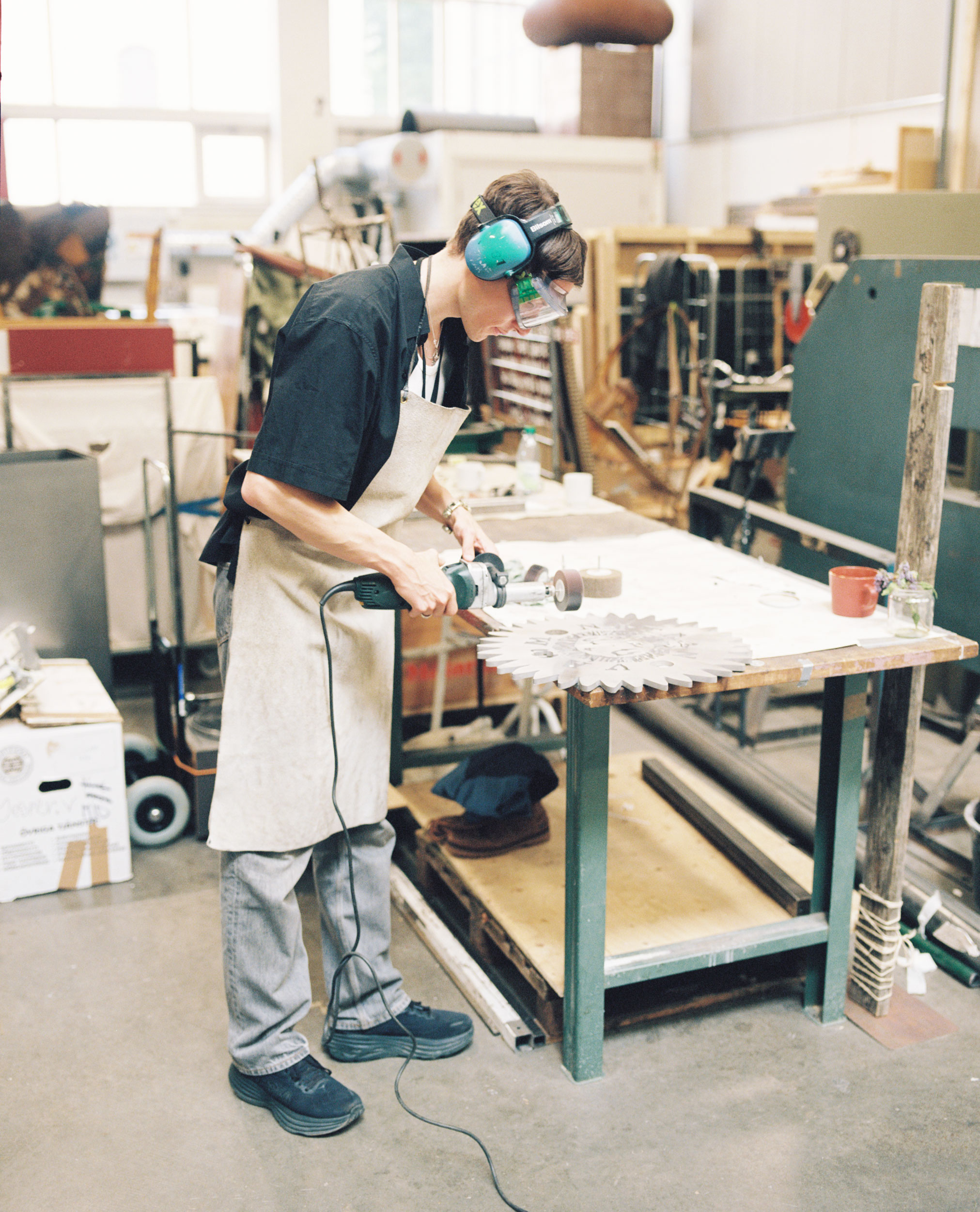

KVM: I wonder about the relation between the ornament and the sculpture, an object defined by its lack of utility. What happens to these objects when you put them in an art context?
ET: I wonder about that too. Some are readymades, while others I modify to add a sense of humour, or even a slightly surreal quality. I’m not an academic, and when making art I think it can be important to sometimes forget everything I’ve read. When I had the idea to put hands and feet on Charlotte Perriand’s chaise longue, I felt like it went outside the world of ideas and came to exist for itself. It allowed me to laugh at the seriousness of the objects, and how seriously I’ve also been taking them.
KVM: I first saw your work at the Luleå Biennial in 2020. For that exhibition you made some pieces more directly related to that landscape, looking at some of the consequences of mining in the region, weaving together industry, science, storytelling and family history.
ET: These works were important for me to make, because they were personal and relate to where I grew up. And of course, the topic has only become more urgent since. Now the north is apparently going to save Sweden, with new mines and server halls serving as some kind of solution to environmental catastrophe. The foundation for much of the life up north as we know it is this kind of brutal, extractive industry. It’s a multilayered, problematic place, and throughout my schooling years I tried to find ways of relating to my heritage as someone from the north. But after the Luleå Biennial I wondered if, as a northerner, I have to be that artist. I don’t want to be made to provide answers to an issue. These strong identitarian discourses can often force a too simplistic reading onto the work, and I feel, as an artist, I have the right to be complex.
KVM: How are you working your way out of that conundrum with the exhibition that you are preparing right now for Luleå Konsthall?
"I’m not an academic, and when making art I think it can be important to sometimes forget everything I’ve read."
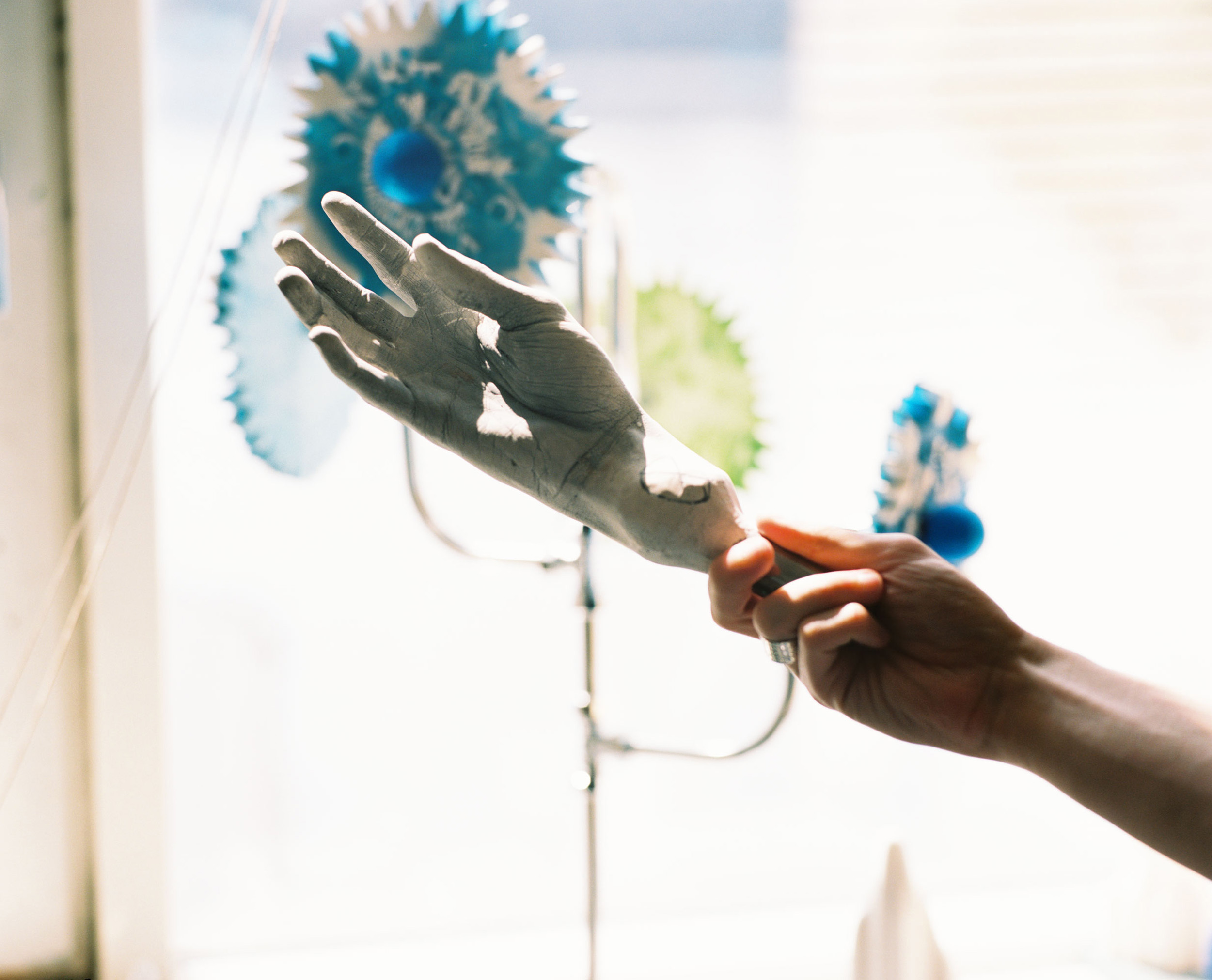
ET: For this exhibition, I will still be dealing with the north, but this time with the clear intention not to portray the industrial history, not to go back to that massive hole in Kiruna, collapsing – but instead how it is to live next to it. Rather than going back to this image of destruction, the massive hole in Kiruna, I wanted to find a more social or empathetic way of thinking about the life that takes place around it. The name of the project is Make Out Make Through, and it goes back to when I was 18 in Luleå, cycling home from the only gay bar in the arctic hemisphere at the time, which was called Make Out. People from the northern part of Finland, or even all the way from Tromsö in Norway, or Vilhelmina in Sweden, would drive for six hours to come to this club. From this little kebab/pizza place, which every other month turned into a queer bar, you could see the iron furnace in Luleå that would colour the sky yellow. Norrbotten has a lot of remnants of Folkhemmet – this harshness of the public architecture, how the industry shapes the built environment, and even the spaces where you live. And so for me to see that one of those spaces could, every other month, be changed into this hedonistic haven was mind-blowing and utopian. So it’s through this kind of transformative space that I want to enter back in, and think about my home town.
KVM: I remember at the Luleå Biennial in 2020, we were doing karaoke and there were two girls that sang Taylor Swift’s Love Story. Afterwards, one of them started crying, and would not stop for hours. It was a very powerful, very grave moment. We were there in the arctic circle, and of course it’s not all about the iron and the mountain, and the towns that are falling into these great pits; of course there are also all these young people whose hearts are broken. There are a lot of narratives playing out at once.
ET: Exactly. That’s a very beautiful memory to reflect what I am trying to think about. Being from there, I had a special insight to understand what happened: it was some dark ghost of this industrial town that haunted her. And I’ve seen so many friends fall into this darkness. But there are also beautiful glimpses of community, and sticking together. The punk scene was big, for instance. It was a common ground where some of these lost people could hang out and find each other.
KVM: In a way, I think, that brings us back to how industrial society with its modernist objects can seem so cold and impersonal, but actually come with these other emotional attachments, too.
ET: Yes, and my question is: how can you interfere with those objects in order to bring those out? Can they be reinscribed?
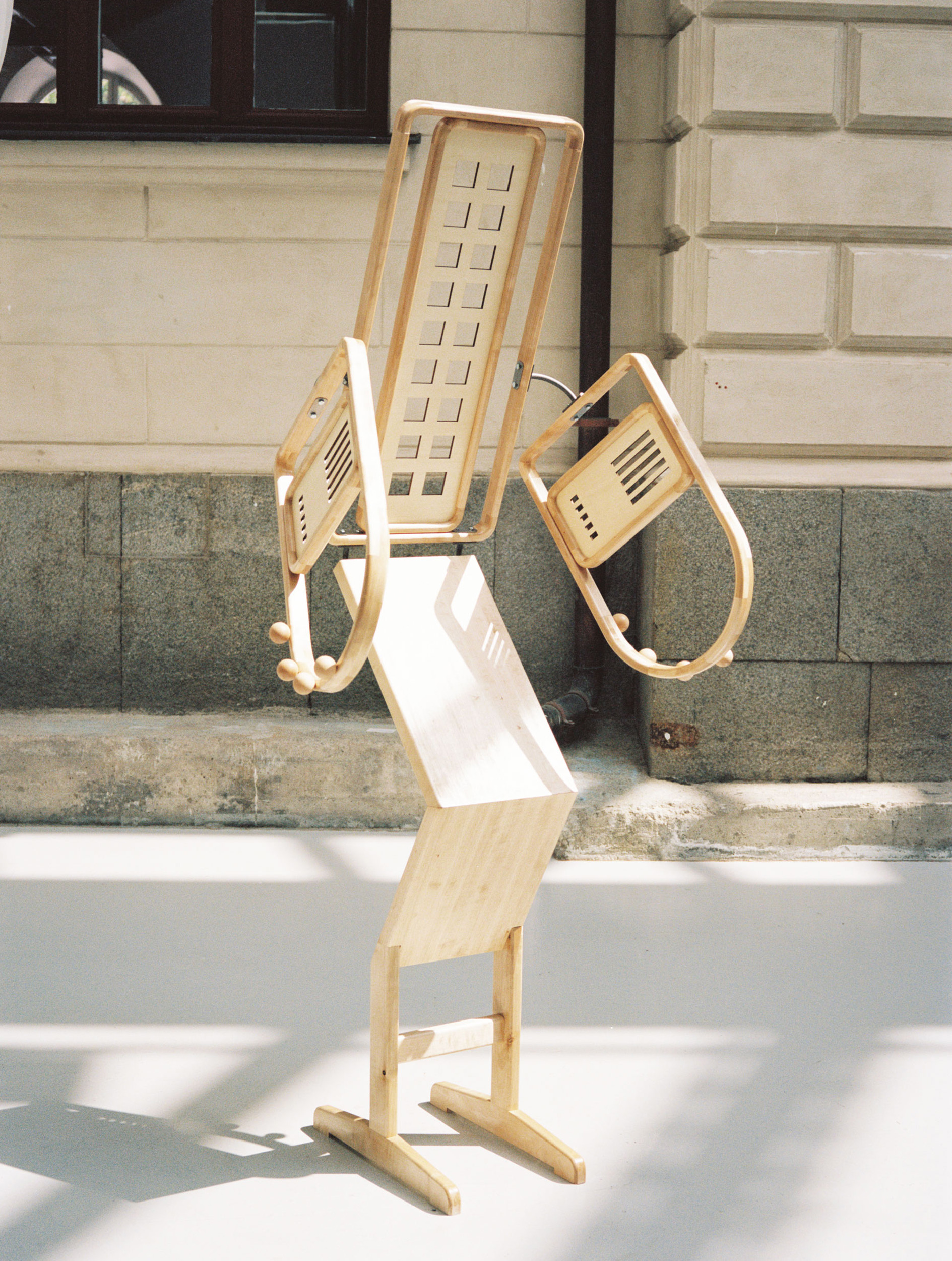
SUGGESTIONS